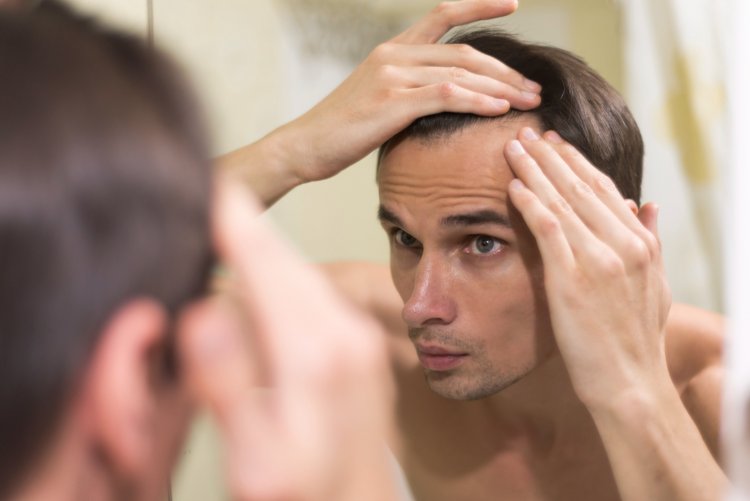Decoding Male and Female Pattern Hair Loss: Causes and Treatments
Hair loss, known medically as alopecia, affects millions worldwide, with distinct patterns and treatments observed between men and women. Understanding the nuances of male and female pattern hair loss is crucial for effective management and treatment. Here’s an in-depth exploration

Male Pattern Hair Loss (Androgenetic Alopecia)
Genetic Predisposition: MPHL is primarily driven by genetics and hormonal factors. It is inherited through family lines and influenced by the hormone dihydrotestosterone (DHT), a derivative of testosterone.
Hormonal Influence: DHT binds to hair follicles’ receptors, causing them to shrink over time. This process, known as miniaturization, results in finer and shorter hair strands until follicles cease producing hair altogether.
Pattern of Hair Loss: MPHL typically begins with a receding hairline at the temples and thinning at the crown, eventually forming an "M" shape. The hairline may continue to recede, leaving the crown and front of the scalp more exposed.
Progression: Hair loss in men tends to be gradual but can vary widely. Some may experience significant balding by their 20s or 30s, while others maintain a fuller head of hair well into their later years.
Treatment Options for Male Pattern Hair Loss
Medications:
-
Minoxidil (Rogaine): A topical treatment that promotes hair growth by prolonging the hair growth cycle and increasing follicle size. It is available over-the-counter and can be used alone or in combination with other treatments.
-
Finasteride (Propecia): An oral medication that inhibits the conversion of testosterone into DHT. It is FDA-approved for MPHL and can effectively slow down hair loss and promote regrowth in many men.
Hair Transplant Surgery:
- Follicular Unit Transplantation (FUT) and Follicular Unit Extraction (FUE): Surgical procedures that involve transplanting healthy hair follicles from areas of the scalp resistant to DHT to balding areas. These techniques provide natural-looking results and can restore hair density.
Laser Therapy:
- Low-level laser therapy (LLLT) devices, such as laser combs or helmets, are used to stimulate hair follicles and promote hair growth in some individuals.
Lifestyle Changes: Adopting a healthy lifestyle, managing stress, and avoiding harsh hair treatments can support overall hair health and complement medical treatments.
Female Pattern Hair Loss
Pattern of Thinning: Women typically experience diffuse thinning across the scalp rather than specific bald patches. Hair loss often begins at the crown and may spread outward.
Hormonal Factors: While DHT plays a role, hormonal changes due to pregnancy, menopause, or conditions like polycystic ovary syndrome (PCOS) can also contribute to FPHL.
Genetic and Environmental Factors: Family history of hair loss, as well as environmental triggers like stress, illness, or certain medications, can influence FPHL onset and progression.
Psychological Impact: Hair loss can have significant emotional effects on women, impacting self-esteem and quality of life.
Treatment Options for Female Pattern Hair Loss
Topical Treatments:
- Minoxidil: FDA-approved for use in women, minoxidil is applied directly to the scalp to stimulate hair follicles and promote hair growth.
Oral Medications:
- Anti-Androgen Medications: Drugs like spironolactone may be prescribed to block the effects of androgens on hair follicles and reduce hair loss.
Platelet-Rich Plasma (PRP) Therapy: PRP involves injecting concentrated platelets from the patient's own blood into the scalp to stimulate hair follicles and promote hair growth.
Hair Transplantation: Advanced techniques allow for the transplantation of hair follicles from donor areas to thinning or balding areas on the scalp.
Cosmetic Solutions: Hairstyling techniques, use of hair fibers or wigs, and scalp micropigmentation can help women manage the appearance of thinning hair.
In conclusion, male and female pattern hair loss are complex conditions influenced by genetics, hormones, and environmental factors. Early intervention, tailored to individual needs, can help slow down hair loss progression and restore confidence in affected individuals. Consulting with a dermatologist or hair specialist is essential to determine the most appropriate treatment plan based on the specific pattern and severity of hair loss.
Disclaimer: The information provided in this article is for educational purposes only and should not be considered medical advice. If you have any health concerns or are experiencing symptoms, it is important to consult with a healthcare professional, such as a doctor or clinic, for proper diagnosis and treatment. Always seek the advice of your doctor or other qualified health provider with any questions you may have regarding a medical condition. Do not disregard professional medical advice or delay in seeking it because of something you have read in this article.
Hashtags: #HairLoss #MalePatternBaldness #FemalePatternBaldness #HairCare #HairHealth
What's Your Reaction?





















